Unlocking Inner Harmony: Embrace International Yoga Day and Discover the Transformative Power of Yoga
Introduction
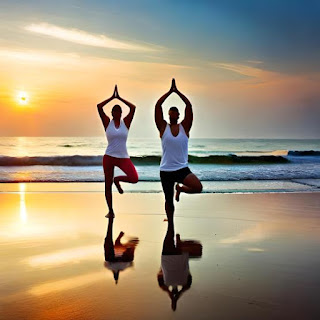 |
History of Yoga
Exploring the Five Types of Yoga
Hatha Yoga
This traditional form of yoga focuses on physical postures and breath control. It is a great option for beginners because it promotes balance, flexibility, and strength.
Vinyasa Yoga
Vinyasa yoga emphasizes fluid movements and synchronizes breath with movement. It offers a dynamic and energetic practice, promoting cardiovascular health and building endurance.
Ashtanga Yoga
Ashtanga yoga follows a set sequence of poses, offering a rigorous and disciplined practice. It enhances strength, flexibility, and mental focus.
Bikram Yoga
Also known as hot yoga, Bikram yoga takes place in a heated room. It consists of a series of 26 poses and aims to detoxify the body, improve flexibility, and enhance mental clarity.
Kundalini Yoga
Kundalini yoga combines physical postures, breathwork, chanting, and meditation to awaken and channel energy throughout the body. It focuses on spiritual growth and self-awareness.
Yoga for Weight Loss Beginners
Are you looking to shed some extra pounds? Yoga can be a great addition to your weight loss journey. It not only helps burn calories but also promotes mindfulness and self-acceptance. Here are some yoga tips for weight loss beginners:
Start with gentle yoga practices such as Hatha or Vinyasa
flow to build strength and flexibility gradually.
Incorporate more dynamic and challenging poses over time to
boost calorie burn.
Practice yoga consistently and combine it with a balanced
diet and regular cardiovascular exercises for optimal results.
Remember, weight loss is a gradual process, and yoga provides a sustainable approach by promoting overall well-being.
Benefits of Yoga for Men and Women
Yoga offers numerous benefits for both men and women, enhancing physical fitness, mental clarity, and emotional balance. Let's explore the specific advantages it brings to each gender:
Benefits of Yoga for Men
Improved flexibility and mobility, reducing the risk of
injuries.
Increased strength and muscle tone, supporting overall
fitness goals.
Enhanced focus and mental resilience, aiding stress
management.
Better cardiovascular health and circulation.
Benefits of Yoga for Women
Alleviation of menstrual discomfort and hormonal imbalances.
Strengthening of the pelvic floor, promoting urinary and
reproductive health.
Relief from pregnancy discomfort and faster postpartum
recovery.
Improved body awareness and self-confidence.
Best Time to Practice Yoga
Determining the ideal time to practice yoga largely depends on individual preferences and lifestyle. However, there are a few things to keep in mind
Morning Yoga: Yoga in the morning may help to wake up your body and mind and set a good mood for the day. It can increase metabolism, improve focus, and support general well-being.
Evening Yoga: Evening yoga can be a valuable tool to wind down after a long day, release accumulated tension, and promote relaxation before sleep. It can aid in better sleep quality and relieve stress and anxiety.
Ultimately, the best time to practice yoga is when you can dedicate uninterrupted time to focus on your practice and honor your well-being.
International Yoga Day
Starting Your Yoga Journey at Home
Beginning your yoga journey at home is an accessible and convenient option. Here's how you can get started:
Create a designated space: Set up a clean and clutter-free area at home where you can practice yoga without distractions.
Gather necessary props: Invest in a yoga mat, blocks, straps, and blankets to support your practice and ensure safety.
Follow online resources: There are numerous online platforms and videos available that offer guided yoga classes for all levels. Find reputable sources that align with your goals and preferences.
Start with beginner-friendly practices: Begin with gentle yoga flows and beginner-level classes to familiarize yourself with the foundational poses and principles of yoga.
Consistency is key: Establish a regular practice by setting
aside dedicated time for yoga each day or several times a week. Consistency
will yield long-term benefits.
Hatha Yoga
A traditional form of yoga focuses on physical postures (asanas) and breath control (pranayama). It provides a strong foundation for beginners and seasoned practitioners alike. In this blog, we will explore the essence of Hatha Yoga, delve into some popular Hatha Yoga poses, and discover the incredible benefits it offers. If you are new to yoga or looking to improve your practice, this article will help you take on the transformative power of Hatha Yoga.
Understanding Hatha Yoga
Hatha Yoga is a Sanskrit term that combines two words: "ha" meaning sun and "tha" meaning moon. It symbolizes the balance between opposing energies within us, such as strength and flexibility, effort and surrender, and activity and stillness. Hatha Yoga aims to create harmony between the body, mind, and spirit through physical postures and conscious breathing.
Hatha Yoga Poses for Beginners
Mountain Pose (Tadasana): Stand tall with your feet hip-width apart, grounding through all four corners of your feet. Lengthen your spine, relax your shoulders, and engage your core. This pose helps improve posture and balance.
Child's Pose (Balasana): Kneel on the floor, bringing your big toes together and sitting on your heels. Exhale and fold forward, allowing your forehead to rest on the mat. Extend your arms in front or alongside your body. This pose promotes relaxation and gently stretches the back.
Downward Facing Dog (Adho Mukha Svanasana): Start on your hands and knees. Spread your fingers wide and press into your palms as you lift your hips toward the ceiling, creating an inverted V-shape. Keep your knees slightly bent if needed. This pose strengthens the arms, stretches the hamstrings, and energizes the body.
Warrior I (Virabhadrasana I): From a standing position, step one foot back and turn it out at a 45-degree angle. Bend your front knee and extend your arms overhead, palms facing each other. Ground through your feet and engage your core. This pose builds strength, improves balance, and cultivates focus.
Tree Pose (Vrksasana): Stand tall and shift your weight onto one leg. Place the sole of your other foot on your inner thigh, avoiding the knee joint. Bring your hands to your heart center or extend them overhead. Find a focal point and balance. This pose improves balance, concentration, and stability.
Benefits of Hatha Yoga
The practice of Hatha Yoga offers a wide range of benefits for the body and mind. Here are some notable advantages:
Physical Well-being: Hatha Yoga improves strength, flexibility, and posture. It enhances blood circulation, oxygenates the body, and promotes overall vitality.
Stress Reduction: Through conscious breathing and mindfulness, Hatha Yoga calms the nervous system, reduces stress levels, and fosters relaxation.
Increased Body Awareness: Hatha Yoga cultivates a deep connection between the body and mind, allowing practitioners to become more attuned to their physical sensations and needs.
Improved Concentration: The focus required during Hatha Yoga practice helps sharpen mental clarity, enhance concentration, and promote a sense of presence.
Energy Balancing: By balancing opposing energies within, Hatha Yoga harmonizes the body's energy systems, leading to a greater sense of equilibrium and well-being.
Embracing Hatha Yoga as a Beginner
If you're new to Hatha Yoga, here are a few tips to make your journey enjoyable and rewarding:
Start with a qualified instructor: Join a Hatha Yoga class led by an experienced teacher who can guide you through proper alignment and offer modifications when needed.
Practice regularly: Aim for consistency in your practice. Even a few minutes each day can make a significant difference in your overall well-being.
Listen to your body: Respect your body's limitations and avoid pushing yourself too far. As a beginner, it's essential to build strength and flexibility gradually.
Breathe consciously: Pay attention to your breath during each pose. Deep, mindful breathing can enhance your practice and help you stay present.
Enjoy the journey: Approach Hatha Yoga with an open mind and a sense of curiosity. Embrace the process and let go of expectations, allowing yourself to explore and grow at your own pace.
Hatha Yoga offers a gateway to physical and mental transformation. By incorporating Hatha Yoga poses into your practice, you can experience increased flexibility, strength, and overall well-being. As a beginner, take your time, listen to your body, and honor your individual journey. Embrace the power of Hatha Yoga, and let it guide you toward a healthier, more balanced life.
Remember, the true essence of Hatha Yoga lies in the harmony between effort and surrender, providing a nurturing path for personal growth and self-discovery.
Vinyasa Yoga
Also known as "flow yoga," is a dynamic and invigorating style of yoga that synchronizes breath with movement. It offers a transformative practice that builds strength, flexibility, and mindfulness. In this article, we will delve into the essence of Vinyasa Yoga, explore a variety of Vinyasa Yoga poses, understand the benefits of a consistent Vinyasa practice, and provide guidance for beginners looking to embark on their Vinyasa Yoga journey.
The Essence of Vinyasa Yoga
Vinyasa Yoga derives its name from the Sanskrit words "vi" meaning "in a special way" and "nyasa" meaning "to place." It emphasizes the seamless flow of movement, transitioning from one pose to another with grace and intention. Vinyasa Yoga offers a creative and dynamic practice that harmonizes breath, body, and mind.
Exploring Vinyasa Yoga Poses
Vinyasa Yoga incorporates a wide range of poses that can be sequenced in various ways. Here are a few foundational poses commonly found in a Vinyasa Yoga practice:
Downward Facing Dog (Adho Mukha Svanasana): Start on your hands and knees, tuck your toes, and lift your hips toward the ceiling, creating an inverted V-shape. Press your palms into the mat and lengthen your spine. This pose strengthens the arms, stretches the hamstrings, and energizes the body.
Plank Pose (Phalakasana): From a push-up position, align your wrists beneath your shoulders and extend your legs behind you, forming a straight line from head to heels. Engage your core and maintain a strong, stable posture. The plank pose builds core strength, tones the arms, and improves overall stability.
Warrior II (Virabhadrasana II): Step one foot back and turn it out at a 90-degree angle. Align your front heel with the arch of your back foot. Bend your front knee, keeping it directly above your ankle, and extend your arms out to the sides. This pose builds strength, and stability, and promotes focus.
Tree Pose (Vrksasana): Stand tall and shift your weight onto one leg. Place the sole of your other foot on your inner thigh, avoiding the knee joint. Bring your hands to your heart center or extend them overhead. Find a focal point and balance. This pose improves balance, concentration, and stability.
Cat-Cow Pose (Marjaryasana-Bitilasana): Start on your hands and knees, aligning your wrists beneath your shoulders and your knees beneath your hips. Inhale as you lift your tailbone and arch your back, moving into Cow Pose. Exhale as you round your spine and tuck your tailbone, moving into Cat Pose. This gentle flow warms up the spine and promotes flexibility.
Benefits of a Consistent Vinyasa Practice
Engaging in a regular Vinyasa Yoga practice can offer numerous benefits for the body and mind. Here are some notable advantages:
Increased Strength and Flexibility: The dynamic movements and flowing sequences in Vinyasa Yoga build muscle strength, improve flexibility, and enhance overall physical conditioning.
Mind-Body Connection: Vinyasa Yoga encourages mindful movement by synchronizing breath with each pose. This cultivates a deep connection between the body and mind, fostering a sense of presence and awareness.
Cardiovascular Health: The continuous movement in Vinyasa Yoga raises the heart rate, providing a cardiovascular workout that promotes cardiovascular health and endurance.
Stress Reduction: The rhythmic breathing and fluid transitions in Vinyasa Yoga helps calm the mind, reduce stress, and promote relaxation.
Creativity and Self-Expression: Vinyasa Yoga offers an opportunity for self-expression and creativity through the exploration of different sequences and transitions. It allows practitioners to find their own unique flow and expression of the practice.
Embarking on Your Vinyasa Yoga Journey as a Beginner
If you're new to Vinyasa Yoga, here are a few tips to help you get started:
Find a Qualified Instructor: Join a Vinyasa Yoga class taught by a knowledgeable instructor who can guide you through proper alignment, provide modifications, and offer guidance for your practice.
Start with a Beginner-Friendly Class: Look for classes specifically designed for beginners or labeled as "gentle" or "foundational." These classes will focus on introducing basic poses and transitions, allowing you to build a solid foundation.
Focus on Breath: In Vinyasa Yoga, breath is the guiding
force. Pay attention to your breath, inhaling and exhaling deeply, and let it
guide your movement.
Vinyasa Yoga offers a dynamic and transformative journey that combines breath, movement, and mindfulness. By exploring a variety of Vinyasa Yoga poses, embracing the benefits of consistent practice, and approaching your practice with curiosity and dedication, you can embark on a fulfilling Vinyasa Yoga journey.
Ashtanga Yoga
Often referred to as the "eight-limbed yoga," is a dynamic and structured practice that focuses on synchronizing breath with a progressive series of postures. With its roots in ancient yogic texts, Ashtanga Yoga offers a profound journey of self-discovery and transformation. In this blog, we will explore the essence of Ashtanga Yoga, delve into the foundational Ashtanga Yoga poses, understand the benefits it brings, and provide guidance for beginners embarking on their Ashtanga Yoga path.
Understanding Ashtanga Yoga
Ashtanga Yoga, developed by Sri K. Pattabhi Jois, follows the teachings of the ancient sage Patanjali's Yoga Sutras. It consists of a set sequence of postures that are linked together with flowing movements and synchronized with deep, intentional breaths. Ashtanga Yoga encompasses eight limbs, which include moral observances, physical postures, breath control, withdrawal of senses, concentration, meditation, and the ultimate state of union or enlightenment.
Exploring Ashtanga Yoga Poses
Sun Salutations (Surya Namaskar): Sun Salutations are a series of dynamic movements that warm up the body and synchronize breath with movement. They consist of a combination of forward folds, lunges, and upward and downward-facing dog poses.
Standing Poses: Ashtanga Yoga includes various standing poses such as Warrior I (Virabhadrasana I), Warrior II (Virabhadrasana II), Triangle Pose (Trikonasana), and Extended Side Angle Pose (Utthita Parsvakonasana). These poses cultivate strength, stability, and balance.
Seated Poses: Seated poses in Ashtanga Yoga include forward folds, twists, and hip-opening postures. Some examples include the Seated Forward Bend (Paschimottanasana), Revolved Head-to-Knee Pose (Parivrtta Janu Sirsasana), and Bound Angle Pose (Baddha Konasana).
Inversions: Ashtanga Yoga incorporates inversions such as Headstand (Sirsasana) and Shoulderstand (Sarvangasana). These poses help build core strength, improve circulation, and bring a sense of calmness to the mind.
Finishing Sequence: The Ashtanga Yoga practice concludes with a sequence of backbends, inversions, and seated forward folds to cool down the body and prepare for relaxation.
Benefits of Ashtanga Yoga
Engaging in a consistent Ashtanga Yoga practice can bring about numerous benefits for both the body and mind. Here are some notable advantages:
Physical Strength and Flexibility: Ashtanga Yoga builds strength and increases flexibility through the systematic progression of poses. It helps tone the muscles, improve posture, and enhance overall physical conditioning.
Breath Awareness and Control: Ashtanga Yoga emphasizes the synchronization of breath with movement. This cultivates a deep awareness of breath and helps develop control over the breath, which can enhance relaxation and focus.
Mental Clarity and Focus: The structured nature of the Ashtanga Yoga practice, combined with the rhythm of breath and movement, promotes mental clarity and concentration. It can enhance focus, reduce stress, and bring a sense of calmness to the mind.
Emotional Balance and Inner Peace: Ashtanga Yoga provides a holistic approach to well-being, allowing practitioners to cultivate emotional balance, resilience, and inner peace through regular practice.
Spiritual Growth and Self-Discovery: Ashtanga Yoga is not just a physical practice; it is a profound journey of self-discovery and spiritual growth. It offers an opportunity to explore the deeper aspects of the self, cultivate self-awareness, and connect with the essence of one's being.
Starting Your Ashtanga Yoga Journey as a Beginner
If you're new to Ashtanga Yoga, here are a few tips to help you get started on your transformative path:
Start with the Primary Series: Ashtanga Yoga consists of different series, with the Primary Series (Yoga Chikitsa) being the foundational sequence. Begin by learning and practicing the Primary Series under the guidance of a teacher.
Practice Mysore Style: Ashtanga Yoga is traditionally taught in the Mysore style, which is a self-paced practice within a group setting. In Mysore classes, each practitioner follows their own breath and movement, receiving individualized attention and guidance from the teacher.
Cultivate Patience and Consistency: Ashtanga Yoga is a disciplined practice that requires patience and commitment. Approach it with a sense of dedication, practicing regularly and honoring the process of growth and transformation.
Listen to Your Body: As a beginner, it's important to listen to your body and respect its limitations. Avoid pushing yourself beyond what feels comfortable and always prioritize safety and self-care.
Ashtanga Yoga offers a transformative path that integrates physical, mental, and spiritual dimensions. By exploring the foundational Ashtanga Yoga poses, understanding the benefits it brings, and approaching your practice with patience and dedication, you can embark on a fulfilling Ashtanga Yoga journey.
Bikram Yoga
also known as "hot yoga," is a unique style of yoga that takes place in a heated room. Developed by Bikram Choudhury, this practice consists of a series of 26 postures and two breathing exercises. The heat in the room is intended to create a challenging yet therapeutic environment for practitioners. In this blog, we will explore the essence of Bikram Yoga, delve into the benefits it offers, and provide guidance for beginners looking to embark on their Bikram Yoga journey.
Understanding Bikram Yoga
Bikram Yoga follows a specific sequence of postures designed to work every part of the body, from head to toe. The practice is conducted in a room heated to approximately 105°F (40.6°C) with a humidity of 40%. The heat is believed to promote flexibility, increase blood circulation, and facilitate detoxification. Each class follows the same sequence, allowing practitioners to become familiar with the poses and experience consistent practice.
Exploring Bikram Yoga Postures
Bikram Yoga consists of 26 postures and two breathing exercises, each designed to target specific areas of the body. Here are some key postures commonly practiced in a Bikram Yoga class:
Standing Deep Breathing: This breathing exercise, performed at the beginning of the practice, involves deep inhalations and exhalations to oxygenate the body and prepare for the poses.
Half Moon Pose (Ardha Chandrasana): This standing pose involves extending one arm overhead while reaching towards the opposite foot, creating a deep stretch along the side of the body.
Eagle Pose (Garurasana): Eagle Pose is a balancing posture that involves wrapping one leg around the other and intertwining the arms. It improves balance, concentration, and joint flexibility.
Triangle Pose (Trikonasana): In this pose, the body forms a triangle shape as one arm reaches toward the floor and the other arm extends toward the ceiling. It stretches the sides of the body and promotes spinal alignment.
Camel Pose (Ustrasana): Camel Pose is a backbend that involves reaching back to hold the heels while arching the spine. It opens the chest, strengthens the back, and improves posture.
Benefits of Bikram Yoga
Engaging in a consistent Bikram Yoga practice can offer numerous benefits for the body and mind. Here are some notable advantages:
Increased Flexibility and Range of Motion: The heat in the Bikram Yoga room helps warm up the muscles, allowing for greater flexibility and increased range of motion in the joints.
Improved Strength and Endurance: The challenging postures and the heat create an intense physical workout, which helps build strength, especially in the core, legs, and arms. It also enhances overall endurance.
Detoxification and Cleansing: The heat in the Bikram Yoga room promotes sweating, which is believed to aid in the release of toxins from the body, promoting a sense of cleansing and rejuvenation.
Stress Relief and Mental Clarity: The combination of deep breathing, physical movement, and focus in Bikram Yoga helps reduce stress, calm the mind, and enhance mental clarity.
Increased Body Awareness: The consistent practice of the same sequence of postures in Bikram Yoga allows practitioners to develop a deeper understanding of their bodies, their capabilities, and their limitations.
Starting Your Bikram Yoga Journey as a Beginner
If you're new to Bikram Yoga, here are a few tips to help you get started on your transformative path:
Hydration and Proper Attire: Due to the heat and intense
physical nature of Bikram Yoga, it's essential to stay hydrated before, during,
and after the practice. Wear light, breathable clothing that allows for
movement and comfort.
Pace Yourself: It's important to pace yourself and gradually build up your endurance and tolerance to the heat. Start with shorter practice sessions and gradually increase the duration as you become more comfortable.
Stay Consistent: Consistency is key to reaping the benefits of Bikram Yoga. Aim for regular practice to allow your body to adapt, improve, and experience the transformative effects of the practice.
Bikram Yoga offers a unique and challenging journey that combines heat, specific postures, and focused breathing. By exploring the postures, embracing the benefits, and approaching the practice with patience and dedication, you can embark on a fulfilling Bikram Yoga journey.
Kundalini Yoga
Often referred to as the "yoga of awareness," is a powerful and transformative practice that combines dynamic physical postures, breathwork, chanting, and meditation. Rooted in ancient yogic traditions, Kundalini Yoga aims to awaken the dormant spiritual energy within, known as Kundalini. In this blog, we will explore the essence of Kundalini Yoga, delve into some of its key poses, address common misconceptions about its safety, and uncover the multitude of benefits it offers to practitioners.
Understanding Kundalini Yoga
Kundalini Yoga is a holistic practice that seeks to unite the body, mind, and spirit. It focuses on activating and raising the Kundalini energy, which is believed to reside at the base of the spine. The practice involves dynamic movements, called kriyas, which combine specific postures, breathwork, chanting, and meditation techniques. Kundalini Yoga is known for its emphasis on self-awareness, personal growth, and spiritual awakening.
Exploring Kundalini Yoga Poses
Kundalini Yoga incorporates a variety of poses and movements that target different aspects of the body, energy centers, and consciousness. Here are some key Kundalini Yoga poses commonly practiced:
Spinal Flexes: This simple yet powerful movement involves sitting in a cross-legged position and flexing the spine forward and backward. It helps to release tension in the spine and activate the flow of energy along the spinal column.
Sat Kriya: Sat Kriya is a dynamic practice that involves sitting in a kneeling position and rhythmically chanting the mantra "Sat Nam" while performing specific hand movements. It is believed to balance the nervous system, strengthen the aura, and awaken Kundalini energy.
Cobra Pose (Bhujangasana): Cobra Pose is a gentle backbend where the practitioner lies on their belly and lifts their upper body, using their hands for support. It opens the chest, stretches the spine, and stimulates the energy flow in the body.
Archer Pose (Archer Mudra): Archer Pose is a standing pose that symbolizes the warrior archetype. It involves taking a wide-legged stance, bending one knee, and extending the opposite arm forward as if drawing a bow. This pose cultivates focus, strength, and determination.
Breath of Fire (Agni Pran): Breath of Fire is a rapid, rhythmic breath that involves pumping the navel point while breathing in and out through the nose. It generates heat in the body, increases vitality, and balances the nervous system.
Addressing Misconceptions about Kundalini Yoga Safety
There are misconceptions surrounding the safety of Kundalini Yoga, often due to misunderstandings or misinterpretations. It is important to address these concerns and provide clarity:
Kundalini Energy Awakening: Kundalini Yoga does focus on awakening Kundalini energy. However, it is important to practice under the guidance of a qualified teacher who can provide proper instructions, ensure a safe environment, and address individual needs.
Respect for Personal Limits: Kundalini Yoga encourages practitioners to listen to their bodies and respect their personal limits. It emphasizes gradual progress and encourages modifications or alternatives to poses when necessary.
Individual Experiences: Kundalini awakening experiences can vary greatly among practitioners. It is a deeply personal and unique journey, and experiences may differ. A supportive community and a knowledgeable teacher can provide guidance and support during this process.
Benefits of Kundalini Yoga
Kundalini Yoga offers a multitude of benefits on physical, mental, and spiritual levels. Here are some of the significant advantages.
Increased Energy and Vitality: Kundalini Yoga practices are designed to activate and channel energy throughout the body, promoting a sense of vitality, rejuvenation, and overall well-being.
Stress Reduction and Emotional Balance: The combination of physical movement, breathwork, meditation, and chanting in Kundalini Yoga helps to calm the mind, reduce stress, and cultivate emotional balance.
Enhanced Spiritual Growth and Awareness: Kundalini Yoga provides a pathway for spiritual growth and self-realization. It helps practitioners connect with their inner selves, expand their consciousness, and experience a deeper sense of spirituality.
Improved Flexibility and Strength: The dynamic movements and postures in Kundalini Yoga promote flexibility, strength, and balance in the physical body.
Heightened Intuition and Creativity: Kundalini Yoga practices aim to activate and balance the energy centers, or chakras, in the body. This can lead to heightened intuition, expanded creativity, and a greater sense of clarity and purpose.
Kundalini Yoga is a profound practice that invites individuals to explore their inner power and potential. Through a combination of dynamic postures, breathwork, chanting, and meditation, Kundalini Yoga offers numerous benefits on physical, mental, and spiritual levels. It is important to approach the practice with respect, seek guidance from qualified teachers, and honor personal limits to ensure a safe and transformative journey.
Conclusion
Yoga is a transformative practice that provides a multitude
of physical, mental, and spiritual benefits. From its ancient roots to its
modern-day popularity, yoga continues to inspire individuals worldwide. By
exploring its rich history, understanding the different types of yoga,
recognizing its benefits for weight loss, men, and women, identifying the ideal
practice time, and embracing International Yoga Day, you can embark on your
yoga journey with confidence. Remember, the key lies in consistent practice and
self-exploration, as you unlock a path to improved health and overall
well-being through the practice of yoga.

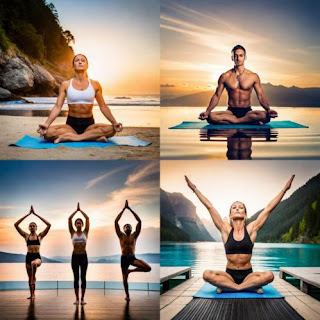
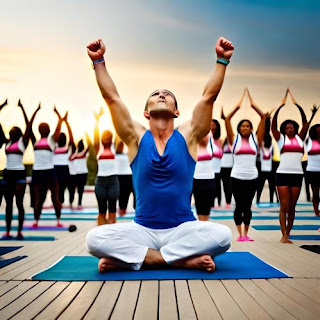
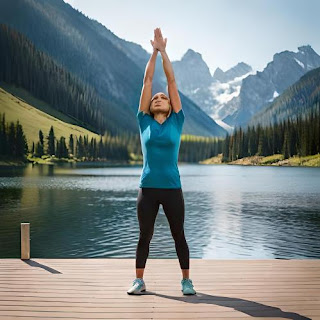
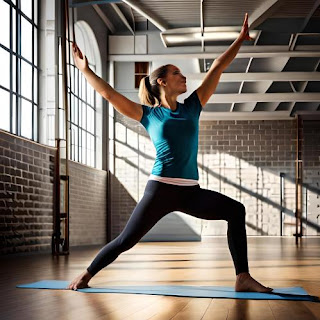
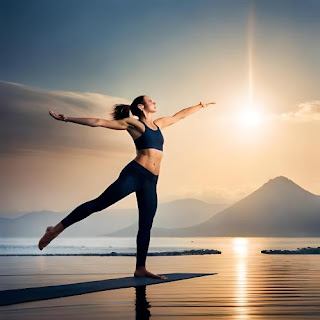
Comments
Post a Comment